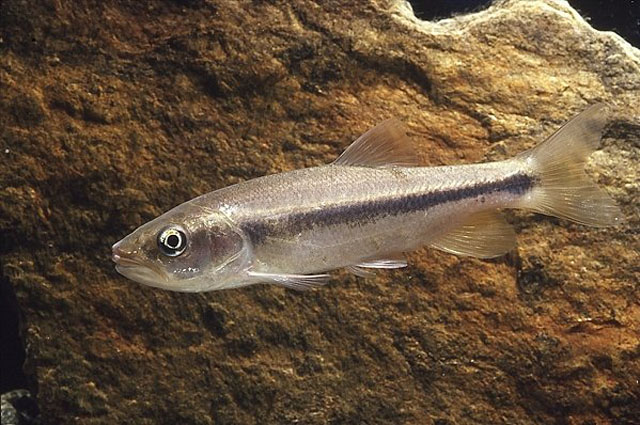| Xenocyprididae (East Asian minnows) |
| 14.88 cm SL (male/unsexed) |
|
benthopelagic; freshwater; depth range 0 - 10 m |
| Asia: endemic to Taiwan. |
|
Dorsal soft rays (total): 10-10; Anal soft rays: 12-13. Diagnosed from all other species of the genus Candidia by the following unique combination of characters: dorsal fin with iii,7 rays; anal fin with iii,9-10 rays; pectoral fin with I, 13-15 rays ; scales on lateral line 51-60; scales above lateral line11-13; scales below lateral line 4-6; predorsal scales 22-26; gill rakers 2-3 + 6-7 (total 9-10); pharyngeal teeth usually 1,4,5 -4,4,1; shallow ventral keel on the posterior half of region between pelvic fin and anus; cheek with a series of 4-6 nuptial tubercles and lower jaw in adult males with 3-5 nuptial tubercles; eye large, check depth about 1.5-2.0 times of eye diameter in adult male; body with a broad, longitudinal bluish-black stripe from upper opercle to caudal fin base, which is irregular and interrupted on anterior half region and forming a large round black mark on caudal fin base; dorsal half of lateral usually uniform dark grayish with very narrow grayish region above bluish-black stripe; ventral half with some blackish brown small spots; and eye with semicircular red-black region on the dorsal one-third to half of eye iris (Ref. 79878). Caudal peduncle slender and belly rounded; barbels 1 pair, minute and located in corner of mouth; lateral line curves downward near belly and upward to middle after reaching caudal peduncle (Ref. 45563). |
| Lives in upper reaches of rivers and likes to stay in clear waters with lower temperature (Ref. 45563). |
|
Not Evaluated (N.E.) Ref. (130435)
|
| harmless |
Source and more info: www.fishbase.org. For personal, classroom, and other internal use only. Not for publication.
